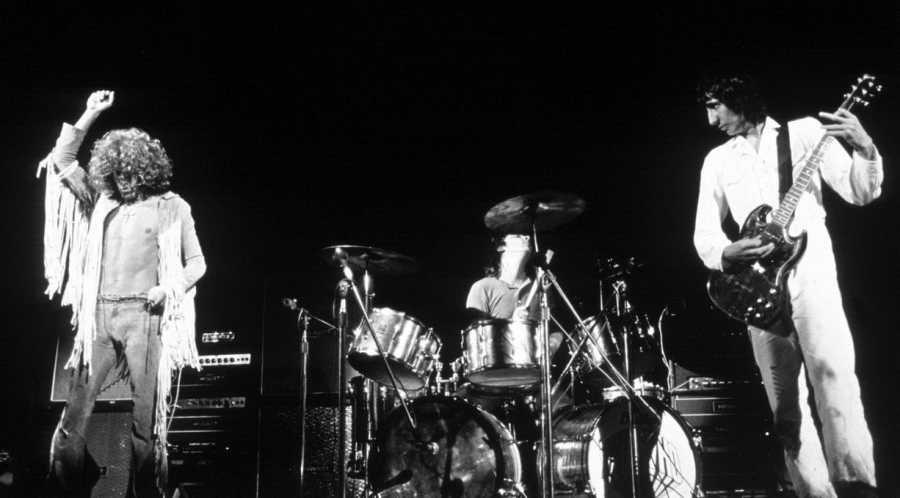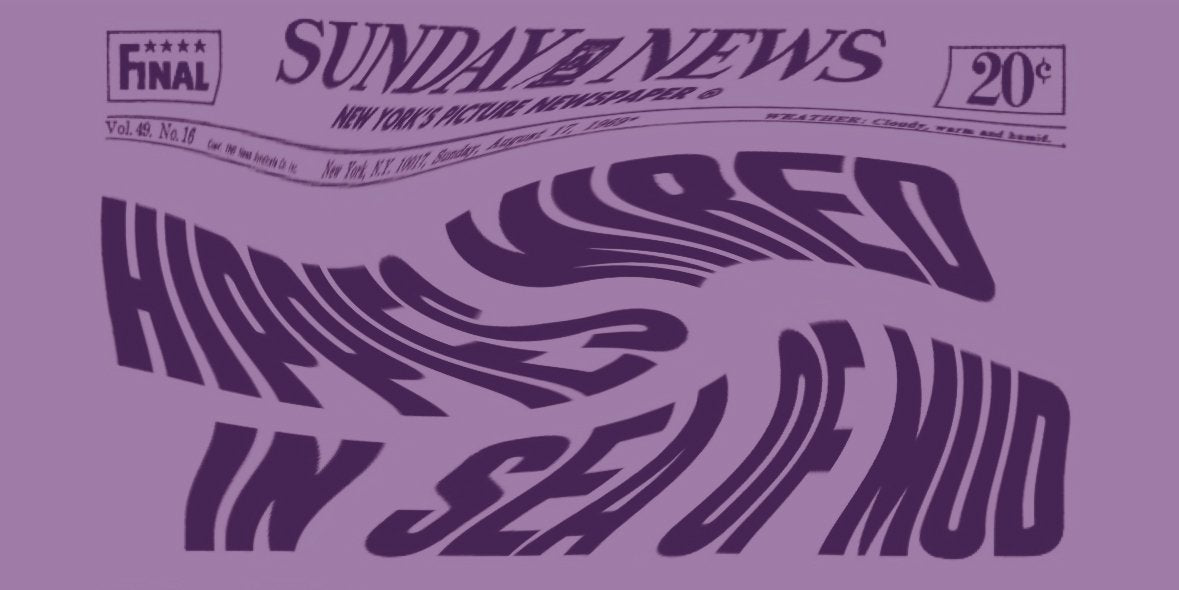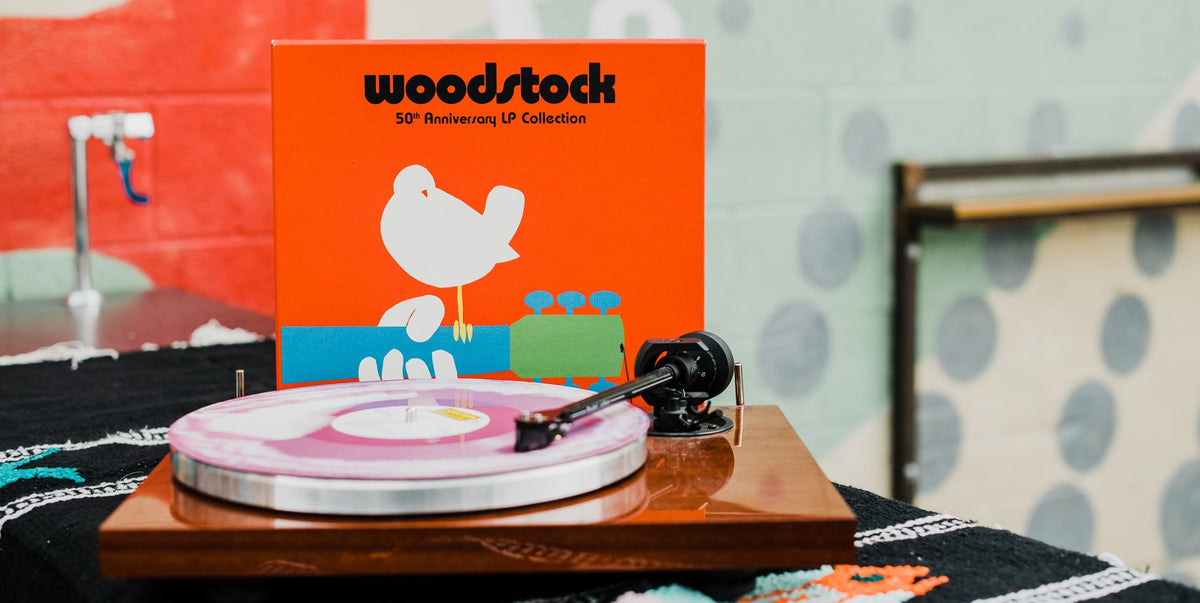Woodstock Was Almost The Fyre Festival Of Its Day
But It Lives On As A Moment That Changed Rock ’n’ Roll
If you have been, well, breathing at any stage over the past 50 years, then no doubt you have heard about the momentous event that was Woodstock of 1969. Set against the backdrop of the Vietnam War and the hippie movement — and illustrated by a plethora of hallucinogens — Woodstock is arguably the most influential music festival of all time, between books, films, songs, and pop culture references. However, in recent years the spotlight has been switched onto Fyre Festival for exponentially different reasons, with seemingly infinite articles written on the topic, in addition to Netflix and Hulu documentaries investigating the matter and that image circulating on Twitter of the pitiful “gourmet” bread and cheese meal that attendees were served. Both were subject to a lot of the same issues — poor-planning, overcrowding, lack of basic amenities — but only one has become a catchall for “this event is a disaster.” Some of it might be recency, but here’s a breakdown of where things went especially wrong for both fests, and, maybe, why Woodstock has lived on as a shining example of festivals despite its problems.
Ticket Sales And Festival Costs
While both festivals were erroneous in their expectations of the number of tickets sold, Woodstock came out better in this regard. The “three days of peace and music” was anticipated to sell 50,000 tickets, ultimately selling an estimated 400,000 tickets, which should have been a much bigger disaster than it was. Fyre fest expected to have 40,000 tickets sold by March 31st, by April it had sold only 8,000.
Although designed as a profit-making venture, Woodstock became a partly “free concert” after the event drew hundreds of thousands more people than the organizers had prepared for to make up for the scarcity of facilities. Tickets for the three-day event had initially cost $18 in advance and $24 at the gate (equivalent to about $120 and $160 today). Around 186,000 advance tickets were sold, and the organizers anticipated approximately 200,000 festival-goers would turn up.
On the other end of the spectrum was the cost for Fyre Festival. Outlandish claims have been made that people were purchasing ticket packages for hundreds of thousands of dollars, however, most attendees paid somewhere between $500 and $2,000, with VIP packages including airfare and luxury tent accommodation for $12,000 for the planned two-weekend event. Despite this, the festival fell short in every way, leaving festival-goers demanding refunds.
One of the most iconic moments of Woodstock was Jimi Hendrix’s rendition of “The Star Spangled Banner,” and it seems only fitting that he was the highest-paid artist of the event, receiving $18,000 (roughly $124,657.66 today). From performers to models, a shift in attention is clear when talking about Fyre Festival. Though not a performer at all, Kendall Jenner made headlines after reportedly earning a whopping $250,000 about four months before the festival by simply announcing via Instagram that some members of the G.O.O.D Music family would be performing.
According to the Netflix documentary, FYRE: The Greatest Party that Never Happened, event organizers for Fyre Festival “fled for their lives” after word got out that the festival was officially cancelled and vendors would not get paid. What you may not know is that two people did actually die at Woodstock; one from a drug overdose, the latter from a tragic accident whereby a teenager was inadvertently run over by a tractor.
Venues, And Promises Made To Attendees
Time Magazine previously dubbed Woodstock festival as “one of the most significant cultural and sociological events of our times.” Due to the romanticized nostalgia with which we generally view Woodstock, it can be a surprise to discover that the weekend was far from a bed of roses and, not unlike Fyre Festival, it was not without its challenges for attendees, organizers, and locals alike.
Both festivals were forced to change from their original venue; Woodstock didn’t even end up happening in Woodstock, New York (though the name remained), taking place instead on a 600-acre dairy farm near White Lake in Bethel. Fyre Festival originally sold itself as being on Pablo Escobar’s former Bahamian Private Island (a difficult feat from the outset, as Escobar never actually owned the island) but they ultimately landed on Roker Point on Great Exuma.
Both events also proved to be controversial among local residents. Those opposed to Woodstock threatened to boycott Max Yasgur’s farm, holding signs stating “Buy No Milk. Stop Max’s Hippy Music Festival.” What’s more, approximately 80 lawsuits were filed against Woodstock Ventures after the fact, primarily by farmers who were in the Bethel area. The film Woodstock financed settlements and paid off the $1.4 million debt (equivalent to $9.6 million today) Woodstock Ventures had incurred from the festival. Similarly, many of the local workers affiliated with Fyre Festival were left outraged and despondent in equal measures when they were left unpaid following the disastrous event. The Netflix documentary estimates that about a quarter of a million dollars is owed in day wages to laborers.
Fyre Festival seemed like a lesson in how not to conduct an event; some of the greatest obstacles the organizers created for themselves were the promises they simply could not keep. Everything fell astoundingly short, from the “luxury accommodation” that transpired to be tents (jokingly compared to ones made available in refugee camps) to the appalling travel, “gourmet food,” and music offerings. But Woodstock ran dangerously low on food, water, sanitation, and space as well, while countless people never even got to make it to the field, as the New York state highway system was heavily congested with would-be festival attendees, especially after attendees, who feared missing the fest altogether, abandoned their cars.
Those who made it quickly found that the rain transformed the field into a muddy quagmire, which was met with mixed reception, though many simply embraced the chance to frolic in the mud. Just as Fyre Festival was subject to criticism in the media, so too did Woodstock suffer some initial backlash before establishing itself as a major player in the zeitgeist of the ’60s. The early trickles of Woodstock’s media coverage while the festival was still taking place highlighted the issues rather than the atmosphere of the event. Front-page headlines in the Daily News included “Hippies Mired in Sea of Mud” and blamed the festival for dreadful traffic conditions, while The New York Times ran an editorial entitled “Nightmare in the Catskills,” which read: “The dreams of marijuana and rock music that drew 300,000 fans and hippies to the Catskills had little more sanity than the impulses that drive the lemmings to march to their deaths in the sea. They ended in a nightmare of mud and stagnation ... What kind of culture is it that can produce so colossal a mess?”
This question of culture is an apt one, as it can be stated that the culture of both festivals’ respective eras came heavily into play, through hippie culture and also the culture of social media. However, where one sold peace, love, and music and, despite numerous other setbacks, managed to deliver on this, the other sold a pipe dream and ended with federal prison, permanently diverging their paths in the music festival history books.
From a spectacular moment in music history, to a spectacle of global proportions, from peace and love to incarceration and lawsuits, in the end both Woodstock and Fyre Festival proved to be much more than a music festival. Although Woodstock had some heavy hitters on its set list — including Creedence Clearwater Revival, the Who, and the aforementioned Hendrix, to name but a few — it has gone down in history for far more than its music. It is considered an iconic moment that transcended the weight of the Vietnam War in the United States and epitomised the hippie movement at its peak. It became a symbol of peace, love, and harmony — a blissful escape in the midst of political unrest. On the other hand, Fyre Festival became a crucial cautionary tale of our time, for those in attendance and those watching the events unfold through their screens, it became an all-too-real reminder to young people of the need to separate what we see on Instagram from our daily reality. If you sell a dream that does not exist, it can only end in a nightmare.
Rachel Cunningham is a writer and journalist from Dublin with a passion for writing about all things music, medical, and sustainable fashion. She has also written a feature-length horror script, maybe one day it will even see the light of day (maybe).
Related Articles
Join the Club!
Join Now, Starting at $36Pages







